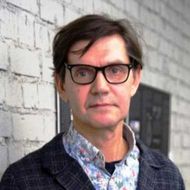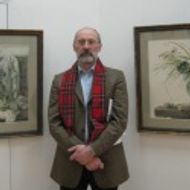- A
- A
- A
- ABC
- ABC
- ABC
- А
- А
- А
- А
- А
-
Department
-
Educational programmes
Address:
190068 Saint Petersburg
123 Griboedov channel, Room 123
Phone:+7 (812)786-92-49
Postal address:
190068 Saint Petersburg
123 Griboedov channel
The Department of History was created in 2012. The overarching goal of the department is systematic development of the field of global, comparative, and transnational history as a potent tool of overcoming the limitations of national history canon, fostering interdisciplinary dialogue in the field of social sciences and humanities, and brining new public relevance to historical knowledge. The department mission includes the development of new type of historical undergraduate and graduate education in Russia and pioneering new research fields in Russian historiography in dialogue with the global historical profession.
De Gruyter Oldenbourg, 2025.
In press
Nedopekina A.
Laboratorium: Russian Review of Social Research. 2024. Vol. 16. No. 1. P. 130-134.
In bk.: Revolutionary Biographies in the 19th and 20th Centuries: Imperial – Inter/national – Decolonial. Göttingen: V&R Unipress, 2024. P. 17-34.
Khvalkov E., Levin F., Кузнецова А. Д.
Working Papers of Humanities. WP. Издательский дом НИУ ВШЭ, 2021
Address:
190068 Saint Petersburg
123 Griboedov channel, Room 123
Phone:+7 (812)786-92-49
Postal address:
190068 Saint Petersburg
123 Griboedov channel

Russian Orientalism
The first lecture "What is Orientalism?" was dedicated to the the theory of Edward Said and how Russia fits in. The book ''Orientalism'' was published in 1978. The main Saidian thesis is that the West constructs itself through the opposition to the East. The East is represented as something backward, savage, barbarian, and exotic and at the same time attractive and romanticized. It serves to justify colonial and imperialist ambitions of western countries. Thus, for Said ''Orientalism'' is the study of the East, which is is used to establish a cultural hegemony. Moreover, Said considered it as a tool of colonial imperialism. According to his views, the Europeans see the world in Manichaean terms, in black and white, that, in the terminology of Michel Foucault, has an impact on their discourse. Said claimed that in Europe academical and colonial go hand in hand, creating interaction between knowledge and power. However, in his revolutionary work, he ignored the specific cases of Germany, Hungary and Russia, which was one of the reasons for criticism.
The next lecture was about Orientology at Kazan University during the first half of the 19th century, where it first developed as part of a university’s curriculum. Kazan University was established in 1805 by the decree of Alexander I. Kazan looked like a good place for the development of Oriental studies and became one of the main centers of it. The tatar population and the proximity to the Near East made the Saidian distinction between self and other more complicated. At the same time, orientologists in Kazan were very strong connected with the state. Asian languages were taught there for future officials. Moreover, professor told about missionary Orientology, the study of Islam at the Missionary Division of the Kazan Theological Academy, with a focus on Nikolai Il’minskii.
The lecture ''The St Petersburg School – The evolution of Orientology after Nicholas I shifted it from Kazan to St Petersburg University’’ was about the development of Oriental Studies in St. Petersburg, which is associated with activities of Sergei Semenovich Uvarov. As a secretary of the Russian embassy in Vienna, Uvarov acquainted with the ideas of Friedrich von Schlegel, who in his work "On the Language and Wisdom of the Indians" argued that the appeal to the Indian texts can lead to the "Oriental Renaissance". Uvarov was so impressed with these ideas, that after his return in 1809 he wrote a project of the Asian Academy. He noted that St. Petersburg was the most suitable place for it, recognizing the unique potential of Russia for Asian Studies, according to its position between East and West. This project was not realized. Nevertheless, Oriental studies developed in St. Petersburg University, especially with the arrival of Osip Ivanovich Senkovskii in 1822. He was educated in Vilnius and then, knowing Arabic, Turkish, Persian and Hebrew, Senkovskii went to Turkey in order to gather some Turkish sources about Poland's past. However, the formal Oriental Languages Department was established on August 27, 1855. The first dean of the faculty was Alexander Kasimovich Kazembek, who believed that faculty activity should be oriented to the practice (educate officials with knowledge of the East). But most of the orientalists in St. Petersburg favored more scolarly aims.
The next part, "Oriental muse", was devoted to Asia as depicted by Pushkin and Vereschchagin. According to the presentation, for Pushkin "One Thousand and One Nights" was one of the sources of inspiration for "Ruslan and Ludmila". This collection of Middle Eastern and South Asian stories and folk tales was for him one of the first impressions about the East in the childhood. In addition, his staying in the Crimea and the Caucasus made the great impact on his work. For example, in "The Fountain of Bakhchisarai" Pushkin created two completely different images of women - polish Maria and eastern Zarema. It is important that Pushkin does not represent any of them as better, considering them as two sides of the same coin. The East was an important motive in the works of Vasily Vereshchagin. After his staying in Central Asia, he created the "Turkestan series", where Central Asia was assosiated with stagnation and barbarism.
The lecture "The Exotic Self" was about Asia as depicted by Borodin and the Silver Age poets. The symphonic poem '' In the Steppes of Central Asia” was prepared for the 25th anniversary of the reign of Alexander II in 1880. Borodin used Russian and Eastern melodies to demonstrate the harmonious interaction between empire and conquered territory. In addition, this method of representation of the colonial subject as a happy was typical for European propaganda of that time. Poets of the Silver Age also often turned to the East. For Balmont Asia was a kind of source of wisdom, as for Tolstoy in the late 1870s. For them the topic about the imminent apocalypse was significant. It is important that they started to consider the sources of it as something internal. Bely unlike Dostoevsky in his "Demons" looked for sources of revolutionary cruelty not in the West, but in the East. Neveretheless, the East was not something alien to him.
The last one 'The Asian Temptation" was about the intellectual attraction of Asia for 19th century thinkers. The term "kitaischina" in the 19th century had a really negative connotation and assosiated with all defects of the East. However, for some people Asia became an alternative to the West. Herzen after movement to Paris and disappointment after1848 began looking for a fresh young revolutionary energy in the East. He was interested not in stagnant China, but in nomadic peoples like the Mongols. Dostoevsky wrote that the russian should not be afraid to accept that they are more "Asian" than Europeans. All this continued its development in ideas of Eurasianists in the 1920s.
Valentina Smirnova
-
https://elearning.hse.ru/en/mooc/
Massive Open Online Courses
-
https://www.hse.ru/en/visual/
HSE Site for the Visually Impaired
-
http://5top100.com/
Russian Academic Excellence Project 5-100
- © HSE University 1993–2025 Contacts Copyright Privacy Policy Site Map
- Edit

